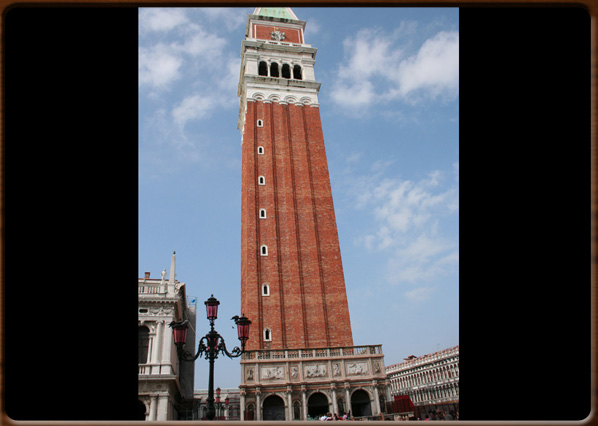

Sile river today.

Belltower of Saint Mark



No video
The city of Venice is built on more than a hundred islands in the middle of a marshy lagoon. In order to overcome these somewhat prohibitive conditions, the early Venetian constructors developed unusual building techniques, using impermeable stone supported by wooden rafts (with larch timber) and piles (mostly pine timber).
This clever solution proved to be highly successful over the centuries, as the majority of Venetian buildings are still solidly built despite many of their piles being more than 500 years old. By 1500 the appearance of the city was much as it is today. It was only in the 20th Century that new buildings started to change the look of Venice.
The piles are quite thin and made of pine, oak or larch. These were sunk into the lagoon bed (up to 7.5 metres) to support the solid layer of caranto. Many piles would be set close together. They do not rot as they are set into the mud at the bottom of the lagoon which prevents oxygen reaching them and so harmful microbes cannot develop.
Istrian stone – a type of marble used for the facades – was also used in the foundations, being non-permeable. However, the tendency was to use the lightest possible materials, given the special nature of the foundations expected to support them. The wooden piles generally came from the forests in the Veneto area to the North and were carried down the rivers into the Venetian lagoon, especially along the River Sile.
When the bell-tower in St. Mark’s Square collapsed in 1902, the old piles were found to be still in perfect condition, some 1000 years after being erected! Like the bell-tower, all the buildings in Venice are supported by similar long, thin piles sunk deep into the substrata to form a solid foundation.
However, there is a certain weight limit for these piles, as proved by the sudden collapse of the bell-tower, whose weight had been increased over the centuries as it was gradually increased in height.
It was rebuilt using wooden foundations, but double the size for safety’s sake.
400 - 1000 - - rev. 0.1.8